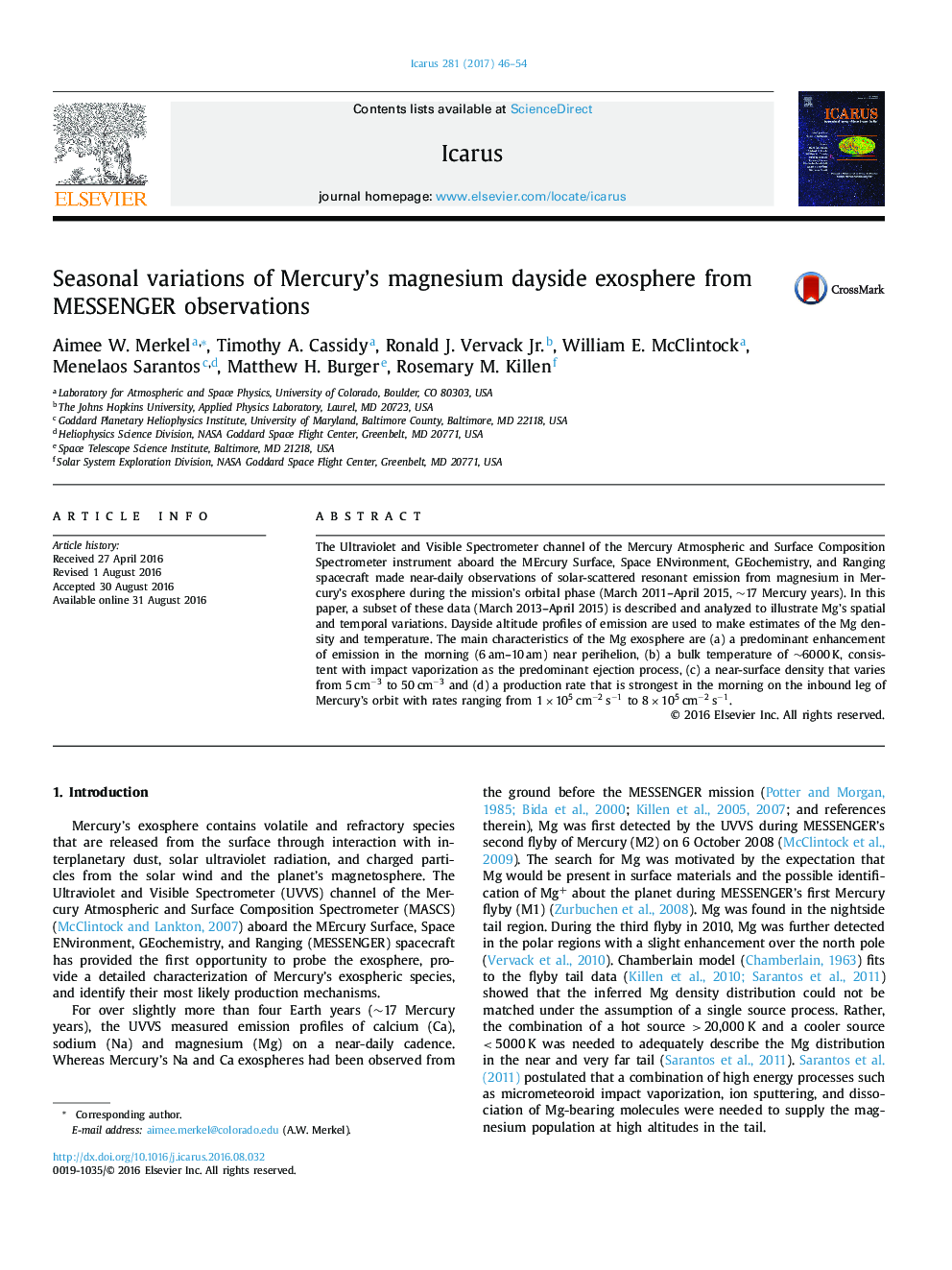| Article ID | Journal | Published Year | Pages | File Type |
|---|---|---|---|---|
| 5487302 | Icarus | 2017 | 9 Pages |
Abstract
The Ultraviolet and Visible Spectrometer channel of the Mercury Atmospheric and Surface Composition Spectrometer instrument aboard the MErcury Surface, Space ENvironment, GEochemistry, and Ranging spacecraft made near-daily observations of solar-scattered resonant emission from magnesium in Mercury's exosphere during the mission's orbital phase (March 2011-April 2015, â¼17 Mercury years). In this paper, a subset of these data (March 2013-April 2015) is described and analyzed to illustrate Mg's spatial and temporal variations. Dayside altitude profiles of emission are used to make estimates of the Mg density and temperature. The main characteristics of the Mg exosphere are (a) a predominant enhancement of emission in the morning (6 am-10 am) near perihelion, (b) a bulk temperature of â¼6000 K, consistent with impact vaporization as the predominant ejection process, (c) a near-surface density that varies from 5 cmâ3 to 50 cmâ3 and (d) a production rate that is strongest in the morning on the inbound leg of Mercury's orbit with rates ranging from 1âÃâ105 cmâ2 sâ1 to 8âÃâ105 cmâ2 sâ1.
Related Topics
Physical Sciences and Engineering
Earth and Planetary Sciences
Space and Planetary Science
Authors
Aimee W. Merkel, Timothy A. Cassidy, Ronald J. Jr., William E. McClintock, Menelaos Sarantos, Matthew H. Burger, Rosemary M. Killen,
